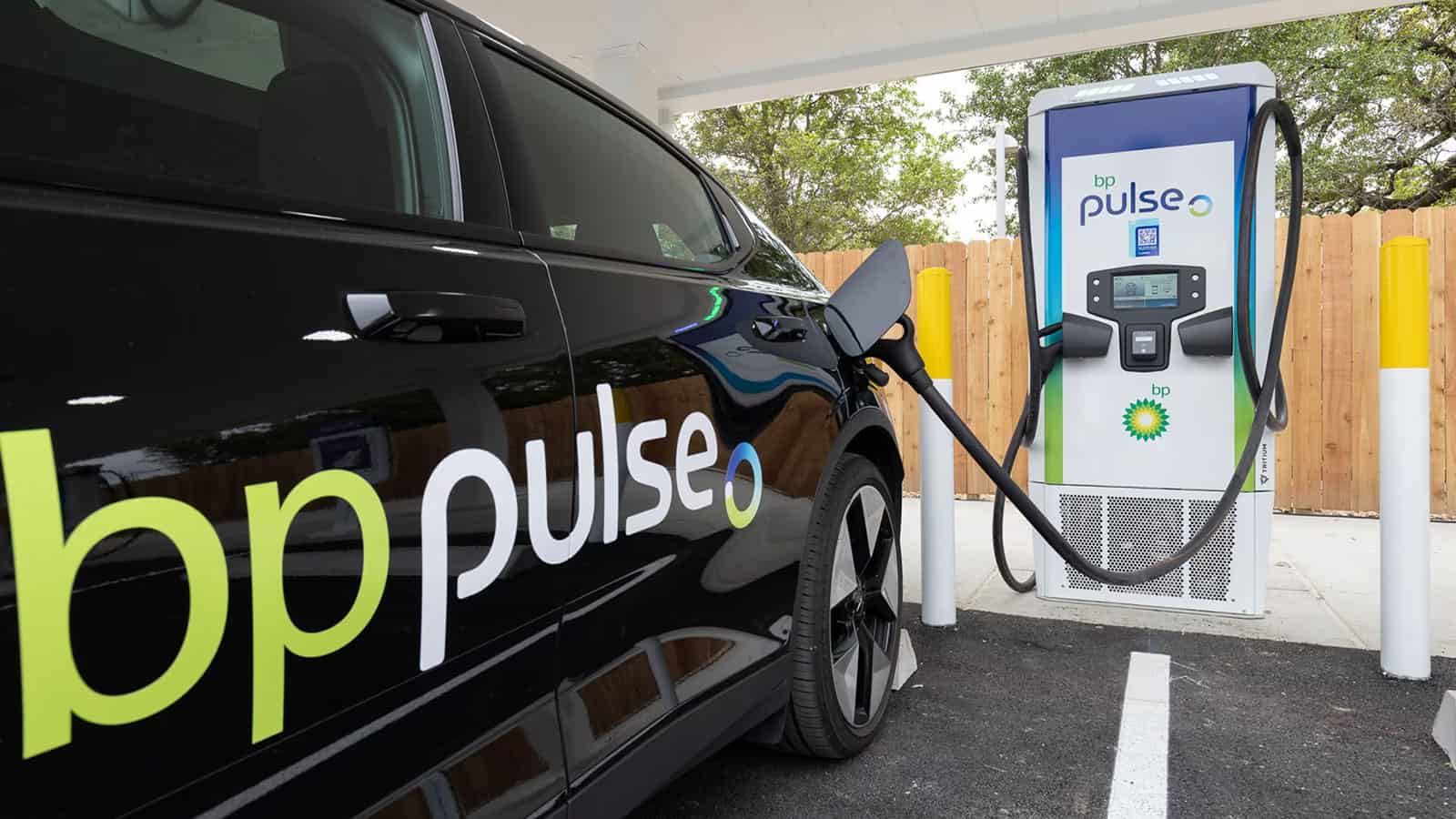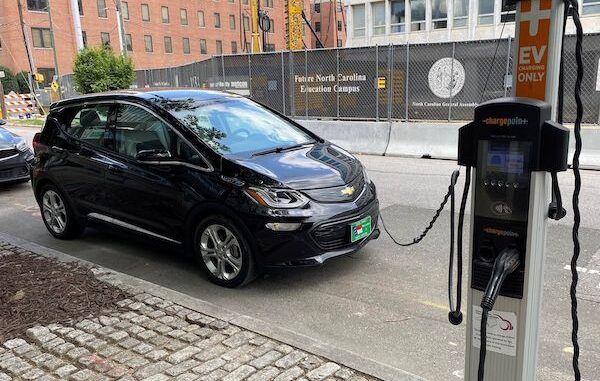Top EV Charging Information: Secret Updates on Infrastructure and Innovation

Recent Innovations in Fast-Charging Technology

Moreover, developments in battery innovation, consisting of improved thermal administration systems and higher power thickness batteries, enhance fast-charging capacities. These growths alleviate the danger of battery destruction throughout quick charging, making sure longevity and efficiency for EV owners.
Additionally, the integration of smart charging options is improving user experience, enabling real-time surveillance and dynamic prices models. EV Charging news. This flexibility enables drivers to enhance charging times and prices based on grid demand
As car manufacturers continue to spend in fast-charging networks, the collaboration in between market stakeholders is essential. Partnerships between charging station service providers and vehicle producers are leading the means for considerable insurance coverage, eventually cultivating a much more robust EV ecosystem. These developments are pivotal in supporting the change to sustainable transport.
Government Efforts for Billing Development
Government initiatives play a critical duty in the development of electrical lorry (EV) charging facilities, helping with the change to sustainable transportation. Different federal and state programs are being executed to improve billing access, lower the financial problem on customers, and promote the fostering of electric automobiles.
Notably, the united state government has allocated considerable financing through the Framework Financial Investment and Jobs Act, which sets aside $7.5 billion for EV charging network growth throughout the country. This funding is focused on deploying countless brand-new billing stations, specifically in underserved locations, therefore addressing range anxiousness amongst possible EV buyers.
Additionally, various states are passing regulations to streamline the allowing procedure for billing terminal setups, which is important for accelerating release. Incentives such as tax credit reports and discounts for both consumers and companies are also being presented to encourage the installation of charging framework.
Furthermore, public-private collaborations are significantly ending up being an emphasis, leveraging personal financial investment to enhance federal government financing. These efforts underscore a joint technique crucial for building a effective and comprehensive EV charging network, inevitably adding to a greener and even more sustainable future.
Ingenious Battery Solutions Enhancing Efficiency
Changing the landscape of electrical automobile (EV) technology, innovative battery options are dramatically enhancing effectiveness and efficiency. Breakthroughs in battery chemistry, specifically with lithium-sulfur and solid-state batteries, are resulting in boosted energy density, which enables longer arrays and faster billing times. These new battery kinds have the possible to outmatch standard lithium-ion batteries by using greater capabilities while minimizing weight, thereby improving total car performance.
Additionally, advancements in battery administration systems (BMS) are enhancing energy usage and expanding battery life expectancy. Smart algorithms check battery health and efficiency, allowing real-time changes to charging and discharging processes. This not just enhances the effectiveness of the battery but likewise guarantees an extra reputable this post and lasting energy source for EVs.
Additionally, the integration of recycling innovations is attending to the ecological impact of battery production and disposal. Advancements in second-life applications for EV batteries are promoting their usage in power storage systems, adding to a round economic situation.
As these innovative battery solutions remain to progress, they promise to transform the EV market, making electric automobiles extra accessible and attractive to a broader target market while sustaining worldwide sustainability goals.

Partnership In Between Automakers and Billing Networks
Recognizing the critical demand for a robust billing framework, automakers are increasingly collaborating with charging network service providers to improve the EV ownership experience (EV Charging news). These collaborations intend to develop a smooth charging ecosystem that profits customers and sustains the change to electrical lorries
Major automobile brands are signing up with forces with well-known billing networks to broaden their billing station coverage, making sure vehicle drivers have accessibility to trusted and convenient billing alternatives. Partnerships with networks like ChargePoint and Electrify America enable automakers to incorporate Clicking Here charging services directly right into their vehicles' navigating systems, leading customers to the closest terminals and providing real-time availability updates.
Furthermore, these partnerships often result in the growth of fast-charging innovations that considerably lower the time required to recharge an EV. By pooling resources and know-how, automakers and billing networks can innovate quicker, developing solutions that satisfy the growing demand for electric flexibility.
Furthermore, joint efforts may additionally lead to more standardized charging procedures, which can reduce customer complication and promote broader EV fostering. Overall, these tactical partnerships are crucial in developing a effective and user-friendly billing framework that fulfills the requirements of an increasing electrical car market.
Challenges Facing EV Billing Infrastructure
As the electric lorry market proceeds to grow, a number of challenges are surfacing that prevent the advancement of an extensive billing infrastructure. One of the primary challenges is the not enough variety of billing stations, particularly in country and underserved urban areas. This space creates variety anxiousness among possible EV customers, deterring them from making the button.
Furthermore, the absence of standardization in billing modern technology makes complex the infrastructure landscape. Variants in plug types and billing speeds can produce confusion for individuals and enhance functional complexities for billing network drivers. Moreover, the combination of charging stations into existing electrical grids poses substantial obstacles. Numerous areas deal with ability restrictions, calling for substantial investments in grid upgrades to fit boosted need.
Another pressing concern is the high cost connected with the installment and upkeep of billing stations, which can be a barrier for both private businesses and public entities. Governing difficulties and zoning restrictions can delay the release of billing facilities, hampering development in broadening important services. Attending to these obstacles will be vital for promoting a durable EV ecosystem that supports the shift to lasting transport.
Conclusion
In final thought, the ongoing developments in EV charging innovation, supported by significant government campaigns and ingenious battery options, are essential for the growth and performance of electric lorry infrastructure. Collaborations in between automakers and charging providers further enhance station coverage, attending to the growing demand for available billing choices. In spite of challenges that continue within the EV billing landscape, these growths indicate a favorable trajectory in the direction of an extra efficient and lasting electrical vehicle environment.
Advancements in billing infrastructure have led to the growth of ultra-fast chargers capable of delivering up to 350 kW of power, substantially decreasing billing times. Variations in plug kinds and charging speeds can create complication for users and increase operational intricacies for billing network drivers.In conclusion, the recurring innovations in EV charging innovation, sustained by significant government initiatives and cutting-edge battery remedies, are vital for the expansion and effectiveness of electrical official site lorry infrastructure. Collaborations between automakers and charging service providers better boost terminal coverage, dealing with the expanding demand for easily accessible billing options. Despite difficulties that continue within the EV billing landscape, these advancements indicate a favorable trajectory towards an extra reliable and lasting electrical car environment.